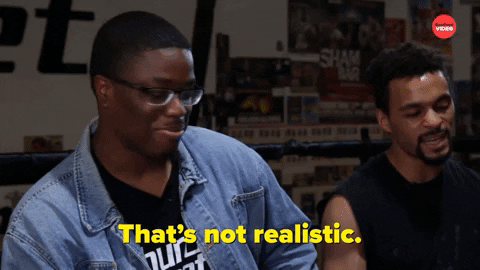
Does it feel like achieving a goal at work is more a game of chance than something you can actually control?
Been there!
Spoiler alert: it could be because your organization isn’t that great at setting goals…
No shade, because I promise you’re not alone:
- 16% of employees report having a clear understanding of corporate priorities
- 90% of businesses reported they failed to reach strategic goals
Why are goals so important?
Humor me for a min…
Goals play a big role in an organization’s success and contribute to:
- Creating direction AND therefore focus for teams and individuals
- Ensuring alignment across an organization
- Clearer decision making
- Fostering a sense of accountability
- Proper resource allocation
- Creating growth paths for employees
When an organization properly sets goals you employees are:
✅More motivated
✅More engaged in their work
✅3.6X more likely to be committed the company
So, what’s holding us back from setting goals and reaping all these amazing benefits??
The 2 biggest mistakes I see organizations make when it comes to goals:
- They are unrealistic
- They lack clarity
Let’s look at each one and how HR can avoid these mistakes.
#1: Your Goals are Unrealistic

If your goals seem as realistic as a Fast and Furious movie, you’ve got a problem on your hands.
Real talk: we set unrealistic goals because we’re not good at estimating our ability to reach them.
JOIN 130K+ HR LEADERS
Get insights, learnings, and advice on how to build companies and cultures that people actually love.
No spam. Unsubscribe any time.
♀️Hi, Queen of the Delulu here – sometimes even I set unrealistic goals.
I love the thrill of a big juicy, challenging goal. Can’t be just me!
TBH: the average employee isn’t going to be motivated by something unreachable – especially IF their performance and therefore compensation might rely on achieving that goal.
3 things you must consider to set realistic goals:
- Resources: do you have the right talent or tools?
- Time: what is a reasonable length of time to accomplish this goal?
- External factors: are market conditions, new tech, or the economy going to impact the ability to complete the goal?
When it comes to setting realistic goals HR has a lot of influence!
✅The #1 thing HR teams can do to keep goals realistic?
Communicate.
Sometimes Execs and Managers forget that they can’t do it all. One way HR can partner better with them around goals is helping manage expectations about what can actually be achieved.
How to do this:
1. Gather your data: you need something to support why you think it’s unrealistic. The most common are past performance, available resources, or time.
2. Do it 1 on 1: make sure this convo is private and in a safe space. If things are already heated, pick another day.
3. Be honest, direct and specific: An example: I wanted to share some thoughts about the goals you mapped out. Based on past performance, I’m not confident we can achieve these goals. This is where you want to highlight the known constraints to achieving the goal.
4. Offer alternatives: Here you want to highlight what a more reasonable goal would be. You can offer edits to the specific goal or maybe completely scrapping the goal.
5. Discuss consequences: As HR it’s important to discuss the impacts of unrealistic goals on managers and employees. Like: burnout, disengagement, and poor performance.
Ultimately, at the end of the day you want your goals to be as realistic as possible to ensure there is focus.
Another thing you want your goals to be? CLEAR.
#2: Your Goals Lack Clarity

If your goals are not clearly defined, how will your employees ever know what’s expected of them?
Spoiler alert: they won’t.
Let’s look at an example:
Goal: Deliver a great customer experience.
What does that actually mean? While the goal is a positive one to have because we know how important customers are to a business it lacks complete specificity.
There are no:
- Guidelines
- Measurable criteria (what is great really???)
- Timelines
There’s no way to measure if that goal was actually achieved or what progress even looks like.
A better way to write this goal:
Improve customer satisfaction scores within the next quarter by 10% through improving average response time to less than 24 hours, streamlining 1 key process, personalizing responses for customers, and overall product quality.
This goal has:
✅A metric to measure (10%)
✅A timeframe (next quarter)
✅Key focus areas (response time, key process, personalized responses, product quality)
Now employees have a roadmap for actions that need to be taken and a timeframe and metric to track against. With that they now know what their work should be driving forward.
It’s ALL in how you communicate the goal.
The SMART framework is incredibly helpful when writing and communicating goals.
When goals lack clarity your more likely to encounter:
- Confusion
- Misalignment
- Low engagement
- Poor resource allocation
- Difficulty in assessing employee performance
- Ineffective communication
When goals are clearly communicated your employees can PERFORM.
The theme of this entire quarter!
A Better Way to Set Goals?

Spoiler alert: there isn’t just one way to set goals.
When it comes to goals, there are many different frameworks!
Enter: OKRs.
Next week I’ll tackle the pro’s and con’s of OKRs and how to pick a framework for your organization.
TO BE CONTINUED…


